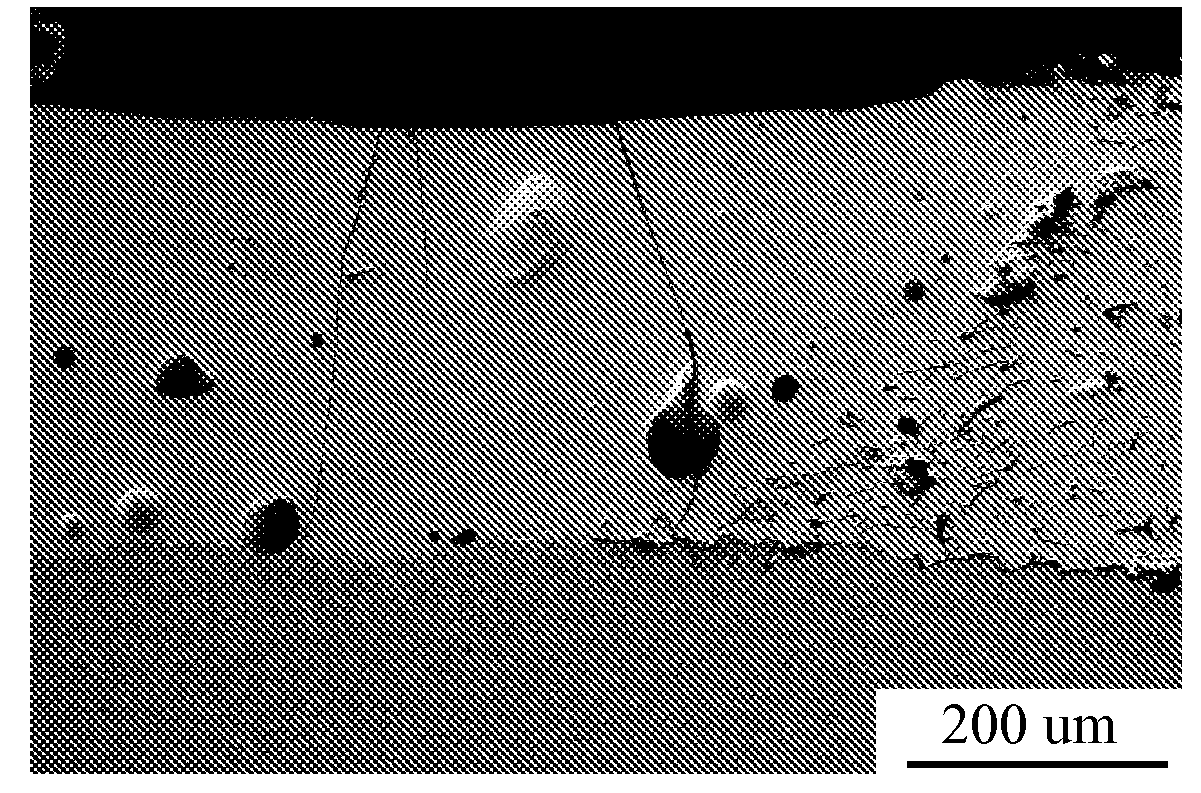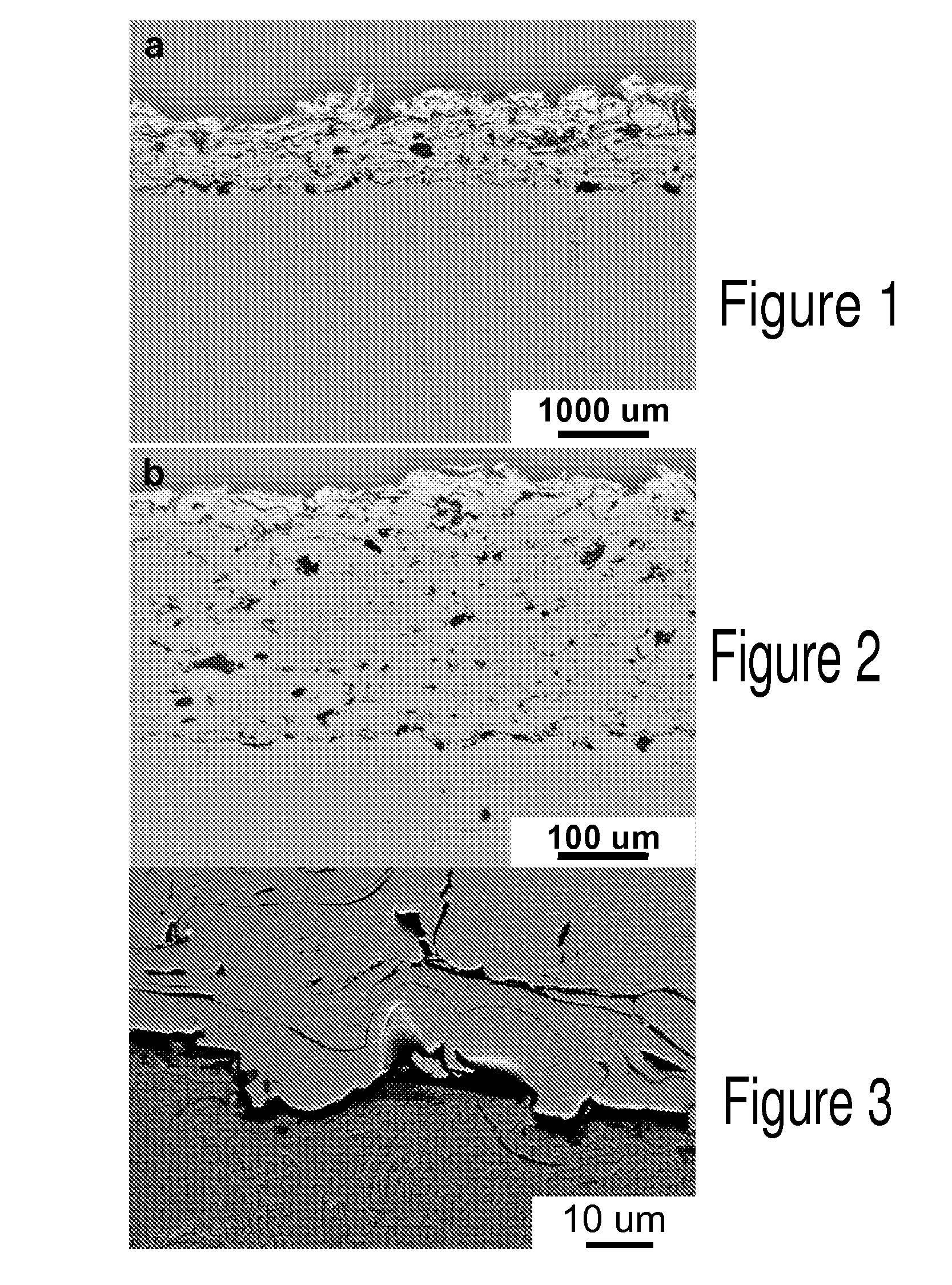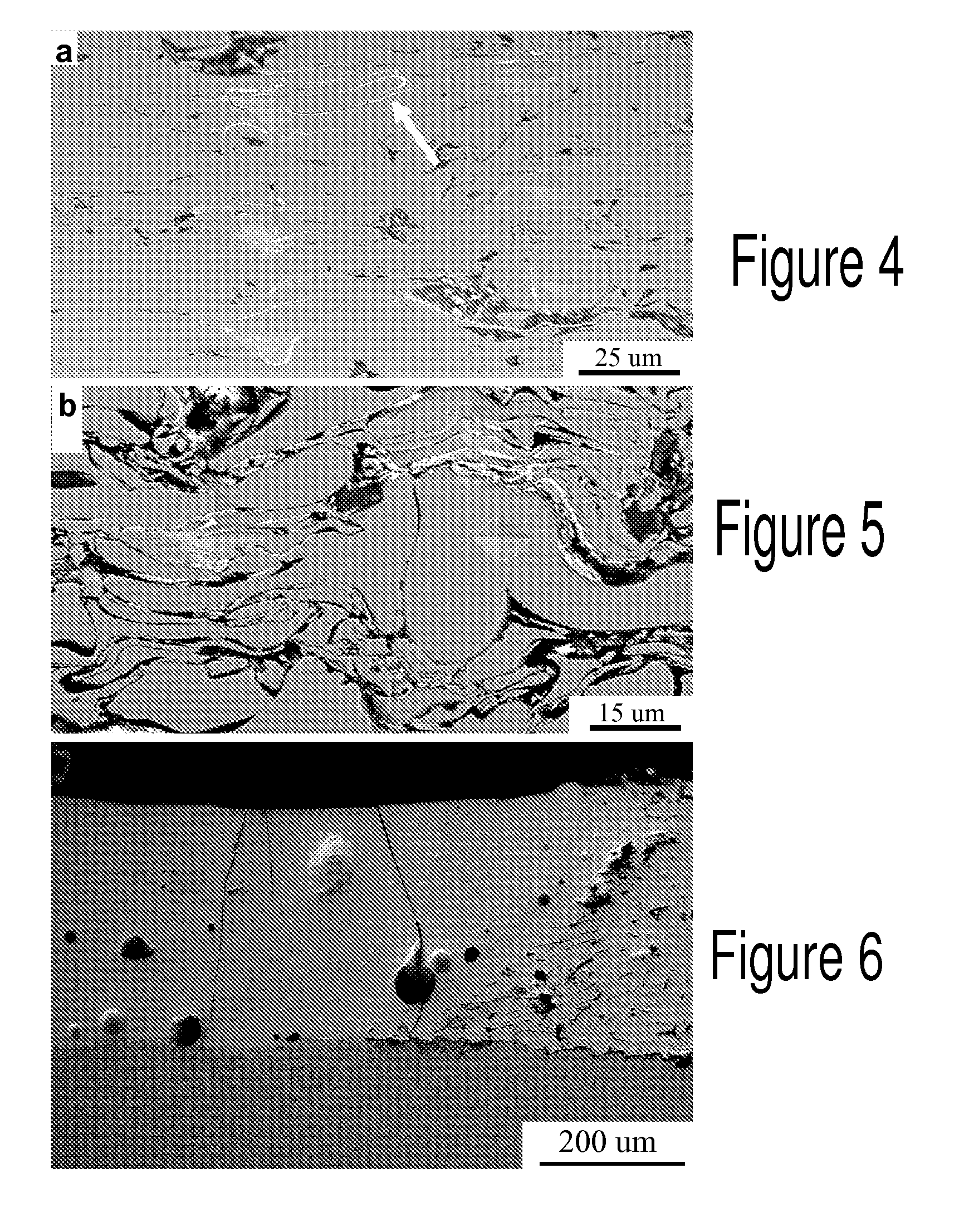Surface Treatment of Amorphous Coatings
a technology of amorphous coatings and surface treatment, applied in solid-state diffusion coatings, mechanical vibration separation, transportation and packaging, etc., can solve the problems of sulfuric acid being a common corrosion problem, severe corrosion problems,
- Summary
- Abstract
- Description
- Claims
- Application Information
AI Technical Summary
Benefits of technology
Problems solved by technology
Method used
Image
Examples
example 1
[0071]Two high strength martensitic P91 steel (9% Cr) plates each with dimensions of 63.5 mm by 25.4 mm by 12.7 mm were used as starting substrate samples. The P91steel substrate has hardness of 38 HRC.
[0072]Supersonic flame (HVOF) thermal spraying was used to apply an iron-based alloy powder onto the P91 steel substrate for an amorphous or bulk metallic glass (BMG) coating having thicknesses of approximately 125, 250 and 380 microns. The alloy has a nominal composition as shown in Table 1. Attempts to measure the hardness of the BMG coating layer was not quite successful, as the coating delaminated as it was pressed on.
TABLE INominal composition of the Fe-based alloyElementFeMoCrWBCat wt. %571283119
[0073]FIGS. 1 and 2 show optical images of cross sections of the two thicknesses, 125 and 380 microns, respectively, with visible pores observed in the untreated BMG coating layer. FIG. 3 shows SEM image of the interface between the substrate and the untreated (not thermally sprayed) HOV...
example 2
[0074]The BMG coated steel coupons of Example 1 were surface treated by laser melting. Laser melting was done using pulsed Nd:YAG laser (O.R. Lasertechnologie GmbH of 160 W max. power). The laser beam was focused on diameters of 2-3 mm on the sample surface at different power levels, 80, 96, and 112 W.
[0075]FIG. 6 is a an SEM image comparing the interface between the substrate and the treated amorphous coating layer of Example 2 (laser melted area—left hand side, 96 W power) and the untreated layer (HVOF sprayed, right hand side) of Example 1, for the coupon with 380 microns thick BMG coating. The remelted (treated) area shows amorphous structure with some crystallization in some of the zones.
[0076]FIGS. 7-9 are optical images showing the microstructures of the treated amorphous coating layer (380 microns thick) after laser treatment at 80 W, 96 W, and 112 W respectively. At 96 W and 112 W laser power, complete melting (treatment) of the BMG coating was achieved, as well as a certai...
PUM
| Property | Measurement | Unit |
|---|---|---|
| Fraction | aaaaa | aaaaa |
| Fraction | aaaaa | aaaaa |
| Cooling rate | aaaaa | aaaaa |
Abstract
Description
Claims
Application Information
 Login to View More
Login to View More - R&D
- Intellectual Property
- Life Sciences
- Materials
- Tech Scout
- Unparalleled Data Quality
- Higher Quality Content
- 60% Fewer Hallucinations
Browse by: Latest US Patents, China's latest patents, Technical Efficacy Thesaurus, Application Domain, Technology Topic, Popular Technical Reports.
© 2025 PatSnap. All rights reserved.Legal|Privacy policy|Modern Slavery Act Transparency Statement|Sitemap|About US| Contact US: help@patsnap.com



